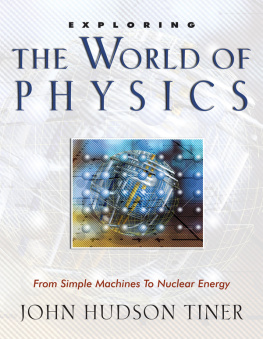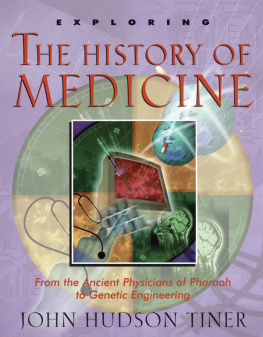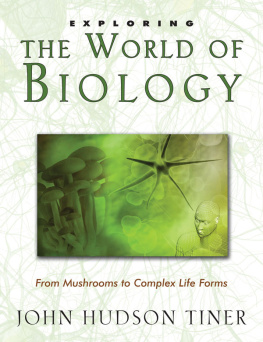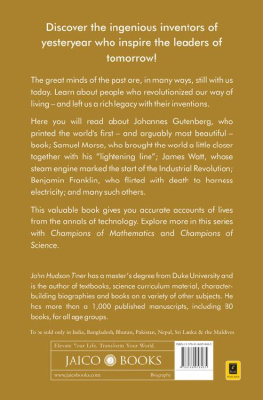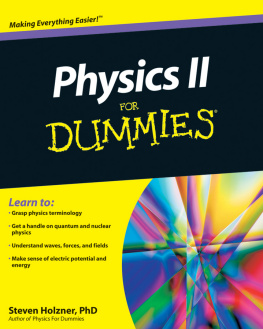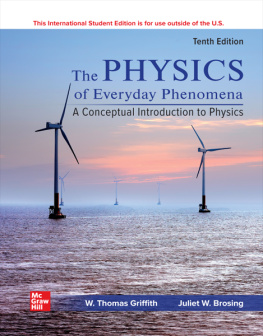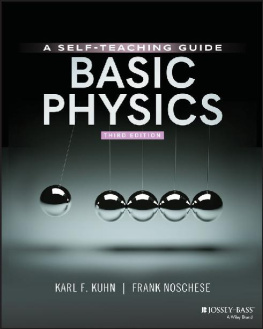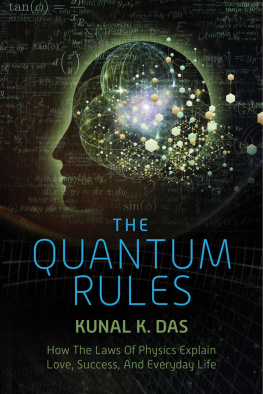First printing: April 2006
Third printing: September 2011
Copyright 2006 by John HudsonTiner. All rights reserved. No part of this book may be used or reproduced in any manner whatsoever without written permission of the publisher except in the case of brief quotations in articles and reviews. For information write:
Master Books, P.O. Box 726, Green Forest, AR 72638.
ISBN-13: 978-0-89051-466-5
Library of Congress Catalog Number: 2005936557
Interior Design and Layout: Carol and Eric Sawyer of Rose Design, Greenfield Center, NY 12833
Please consider requesting that a copy of this volume be purchased by your local library system.
Master Books is a division of the New Leaf Publishing Group, Inc.
Printed in the United States of America
For information regarding author interviews, please contact the publicity department at (870) 438-5288.
Please visit our website for other great titles:
www.masterbooks.net
Dedication
This book is dedicated to Matthew John Stephens.
How to Use Exploring The World of Physics
Students of several different ages and skill levels can use Exploring the World of Physics. Children in elementary grades can grasp many of the concepts, especially if given parental help.
Middle school students can enjoy the book independently and quickly test their understanding and comprehension by the challenge of answering the questions at the end of each chapter.
Junior high and high school students can revisit the book as a refresher course. The sections marked For More Study are intended to challenge older students. These sidebars can be a springboard for additional study by advanced students.
Thought-provoking questions and problems are found throughout the book. The activities reinforce the essential principles of physics.
Table of Contents
Chapter One
Motion
PROBLEMS
1. How do modern scientists test new ideas?
2. What discovery helped clocks keep better time?
3. How did Galileo slow the motion of falling balls?
Can You Propose Solutions?
Physics is the science that explores how energy acts on matter. Everything in the universe that we can experience with our senses is made of matter and energy. The Bible recognized this fact in Genesis 1:13. After God created earth (matter), He said, Let there be light [energy].
Matter has weight and occupies space. Energy can put matter in motion or change it in some way. Physics is sometimes described as the study of matter in motion, but physics is far more than that because physics includes exploring not only motion, but also sound, heat, light, electricity, magnetism, and nuclear energy.
Physics goes far back in time. Aristotle, an ancient Greek scientist, lived more than 2,000 years ago. The Greeks made an effort to gain knowledge through observation and reasoning. However, they seldom did experiments, which are observations that can be repeated under controlled conditions. Without experiments, they could not repeat what they observed to test their conclusions.
For instance, suppose they saw a leaf fall from a tree and later saw an apple fall from the same tree. They might speculate as to why the apple appeared to fall more quickly than the leaf, but they would not think to pick up an apple and a leaf and drop them together.
In addition, measurement is essential to good science. Scientists must be able to measure quantities such as weight, distance, time, temperature, electric current, and light intensity. Ancient people had few accurate scientific instruments, so they could not easily measure what they observed. Ancient scientists could only state what they discovered as general conclusions rather than precise scientific principles.
For example, they might see a heavily loaded cart roll down a hill and conclude that it gained speed. From one moment to the next it rolled faster and faster. However, they had no accurate clocks, so they could not time the cart and measure its actual speed.
The first person to make real progress in understanding physics was Galileo, a scientist who lived in Italy almost 500 years ago. Like the Greeks, he had a brilliant and inquiring mind. In addition to thinking and observing, he was willing to experiment. Experiments are a great way to collect scientific information and test new discoveries.
Galileo entered the University of Pisa in 1581 to study medicine. Europe at that time was coming out of a period known as the Middle Ages. The Middle Ages were sometimes called the Dark Ages in Europe because learning had been in a deep decline. Most peopleincluding leaders of countriescould neither read nor write.
In these dark days, scholars held in high regard the confident writings of Aristotle and other Greeks who lived almost 2,000 years earlier. People of the 1500s turned to ancient books as final authority on scientific matters. They saw no reason to question Aristotles books or test his statements.
During his first year at the university, Galileo discovered an important principle that ancient Greeks had completely overlooked.
Students at Pisa began their day by going to chapel. One morning Galileo knelt and said his prayers in the dark chapel. He arose to watch a lamplighter light the candles in a lamp which was hanging 30 feet from the high ceiling.
Lighting the candles caused the lamp to move in a slow back and forth motion. As its motion died down, it seemed to take as long to make a small swing as a large one. Galileo timed the chandelier swing with his pulse.
Galileo returned to his room to try other pendulums. Experiments showed that the time for a complete swing was the same whether the arc was a small one or a large one.
Galileos discovery is known as the principle of the pendulum. A principle is a law of science. In this case, Galileo had found that two pendulums of the same length would swing at the same rate regardless of how wide or shallow their arcs. Only by making the string longer could he lengthen the time needed to make one back and forth swing.
Aristotle
Aristotle (Greek Philosopher, 384 322 b.c.) was a great thinker of the ancient world. He attended school at Platos Academy in Athens, Greece. It was one of the best schools in the world. Aristotle learned to observe carefully, pose insightful questions, and use reason to form conclusions. He did not, however, learn to do experiments to reveal new facts. Doing an experiment required work with the hands, but Greek thinkers thought manual labor was the work of servants.
Aristotle stayed in Athens for 20 years, first as a student and then as a teacher. He returned to his home country of Macedonia and served as the private tutor of the young man who would become Alexander the Great. Alexander the Great grew up to become the greatest military general of the ancient world.
Aristotle and Alexander the Great became good friends. Alexander the Great gave Aristotle money to start his own school in Athens. Aristotle called his school the Lyceum. Aristotle lectured as he walked about in the garden with his students. He encouraged his students to test their observations with common sense and clear thinking.
Aristotle wrote a book about the systems of laws that govern countries. He believed education was essential to the survival of a nation. Aristotle said, All who have meditated on the art of governing mankind are convinced that the fate of empires depends on the education of youth.
About 50 of Aristotles books were preserved. Errors in his books are minor considering the vast number of subjects he discussed. However, scholars in Europe during the Middle Ages believed his books contained no errors and all knowledge could be found in them. Medieval scholars made few important new discoveries in science. Aristotle would have been appalled if he had known that future people would use his books as the final word on scientific questions.

